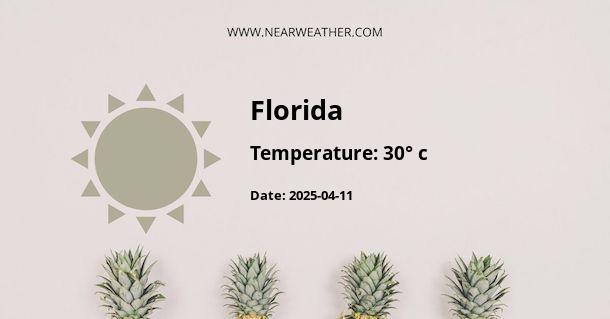Climate and Weather in Florida, CU
Florida, CU experiences a humid subtropical climate, characterized by hot and humid summers and mild winters. Located in the southeastern United States, Florida's climate is influenced by its proximity to both the Atlantic Ocean and the Gulf of Mexico. The state is also known for its frequent thunderstorms, hurricanes, and high humidity levels.
Seasonal Weather Patterns
Florida's climate can be divided into two main seasons: the wet season and the dry season. The wet season typically runs from May to October, while the dry season lasts from November to April. During the wet season, the state receives a significant amount of rainfall, with frequent afternoon thunderstorms being a common occurrence. The dry season, on the other hand, is characterized by lower humidity levels and cooler temperatures.
Temperature
Florida experiences high temperatures throughout the year, with average highs ranging from 70°F (21°C) in winter to 90°F (32°C) in summer. The southern parts of the state tend to have higher average temperatures compared to the northern regions. The coastal areas of Florida benefit from the moderating effects of the ocean, resulting in slightly milder temperatures compared to inland areas.
Precipitation
Florida is known for its high precipitation levels, particularly during the wet season. The state receives an average of 40 to 60 inches of rainfall annually, with the southern regions experiencing higher annual precipitation levels compared to the northern areas. The frequent afternoon thunderstorms during the wet season contribute significantly to the state's overall precipitation levels.
Extreme Weather Events
Florida is no stranger to extreme weather events, with hurricanes being a major concern for the state. The Atlantic hurricane season, which runs from June 1st to November 30th, poses a significant threat to the state, with intense tropical storms and hurricanes capable of causing widespread damage. It is essential for residents and visitors to stay informed about hurricane preparedness and evacuation procedures during this time of the year.
Climate Graph
The following graph illustrates the average monthly temperatures and precipitation levels in Florida, CU:
Conclusion
Florida, CU's humid subtropical climate brings hot and humid summers, mild winters, and significant precipitation levels. Understanding the seasonal weather patterns, temperature fluctuations, and the potential for extreme weather events is crucial for residents and visitors to prepare and adapt to the climate of Florida. By staying informed and taking necessary precautions, individuals can fully enjoy all that Florida has to offer while staying safe and comfortable in its unique climate.
Overall, Florida's climate and weather patterns make it a diverse and dynamic location, offering a range of experiences throughout the year. Whether you're seeking sunshine and warmth or the excitement of tropical storms, Florida, CU has it all.A - Florida's Latitude is 21.524719 & Longitude is -78.225830.
A - Weather in Florida is 30° today.
A - Climate Conditions in Florida shows scattered clouds today.
A - Humidity in Florida is 41% today.
A - Wind speed in Florida is 12.67 km/h, flowing at 360° wind direction. today.
